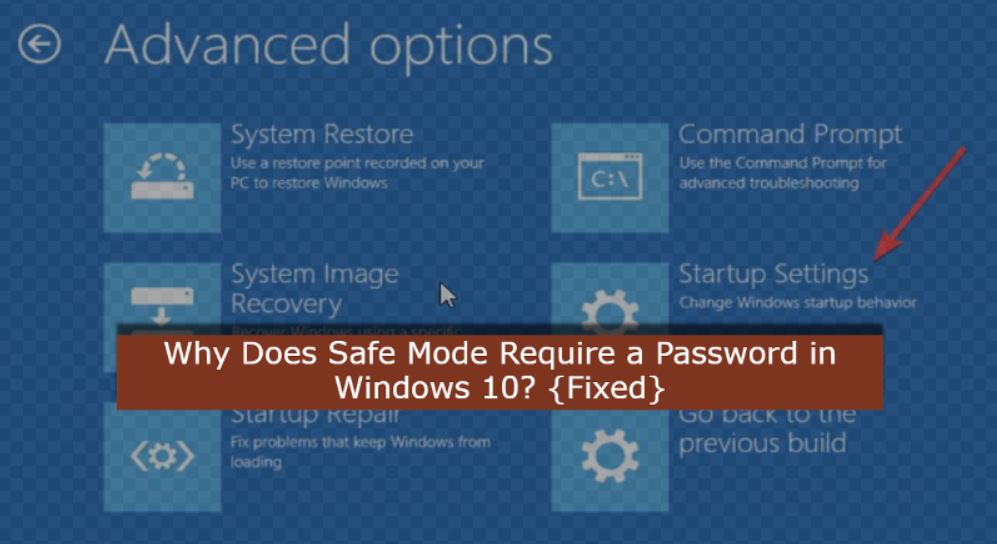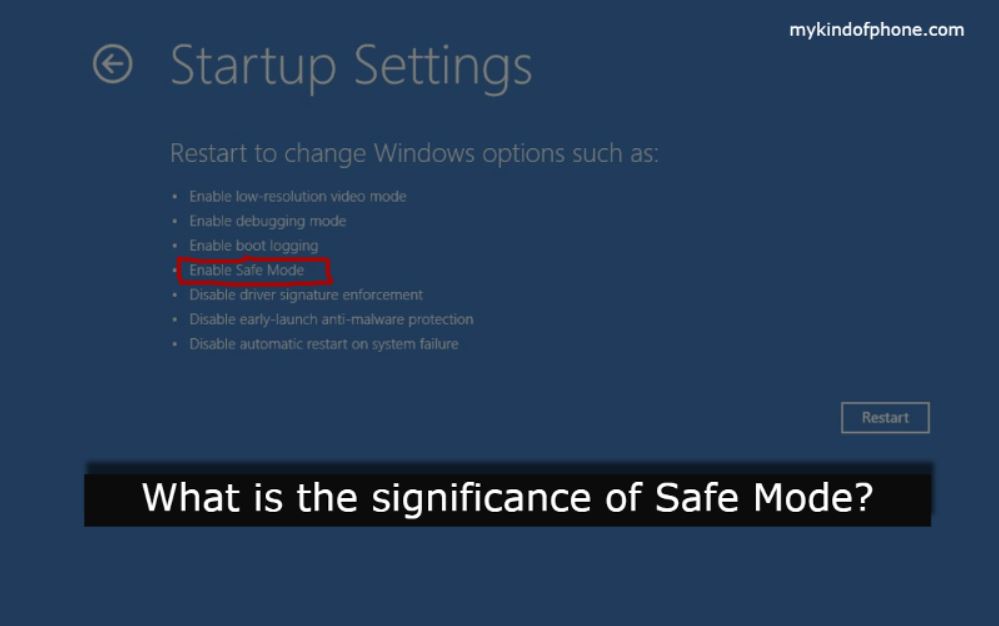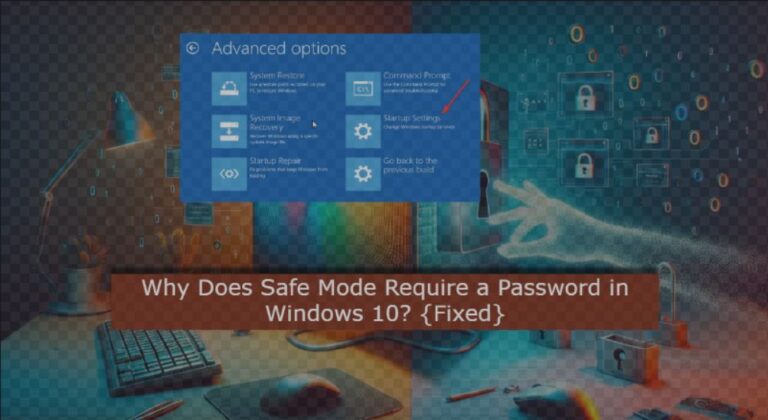Windows 10 users often encounter a puzzling situation when they boot their system in Safe Mode: It shows the necessity of a password by using auto-save options. This security measure, even though looks rather ineffective, has a significant role in the protection of the system and the user information. A common question by computer users is: “Why does Safe Mode require a password in Windows 10“, especially when the person needs to troubleshoot themselves or fix the computer, or just needs to get into the computer in a pinch.
Understanding this password condition gives information about Microsoft’s view of the system’s security. This article will also consider the Safe Mode in Windows 10, the rationale behind protecting it with a password, and the impact that has been outlined.
Besides, it also covers other related concerns such as booting into Safe Mode without logging in or entering the incorrect password in the Startup Repair or the use of the sign-in screen in Safe Mode. Thus in the long run this security measure shall be understood by the readers as to why it is adopted and how it shall be managed.
Safe Mode in Windows 10: What is It and Why Does Safe Mode Require a Password in Windows 10?

What is Safe Mode?
Windows 10 has a feature known as Safe Mode that starts Windows with a limited extent of files and drivers. This free software is created for those problems that hinder Windows from operating in the normal fashion. In this mode, only the basic drivers are invoked and this normally reduces the audio and graphics qualities. The programs you would see as you go through the Safe Mode include may not operate as they are supposed to do so for instance scanners or network drives.
What is the significance of Safe Mode?

Interestingly, its primary purpose of demonstrating in Windows 10 is to launch and troubleshoot some common issues of the operating system. It enables the users to detect problems resulting from the newly added hardware, software or tainted drivers.
Basically, getting into the Safe Mode enables the users to assess whether some of the settings that come with the mode or default device drivers are causing the buzz. This troubleshooting tool has been a staple in computing for decades, offering a way to cut through the clutter of advanced drivers and features.
How to access Safe Mode
So Why Does Safe Mode Require a Password in Windows 10 and Windows 11? Hope you got the answer for that now how to access safe mode in Windows 10.
To access Safe Mode in Windows 10, users can follow these steps:
- Open Settings by pressing Windows + I
- Click on Update & Security, then select Recovery
- Under Advanced Startup, click Restart Now
- After restarting, choose Troubleshoot > Advanced Options > Startup Settings > Restart
- Select option 4 or F4 for Safe Mode, or 5 or F5 for Safe Mode with Networking
READ MORE:
- 2 Easy Fixes of “Field ‘Browser’ Doesn’t Contain a Valid Alias Configuration”
- 3 Easy Ways to Solve ESO Error 307 {2024} and much more
The Password Requirement in Safe Mode
So ton answer your question Why Does Safe Mode Require a Password in Windows 10? Safe Mode in Windows 10 uses the same password as the normal mode. This security measure ensures that only authorized users can access the system in this diagnostic state. However, some users may encounter issues when trying to enter Safe Mode, as the password requirement can sometimes be problematic.
Why Safe Mode asks for a password
Safe Mode requests a password to protect the system and user data. It’s a crucial security feature that prevents unauthorized access to the computer’s core functions and files. By requiring authentication, Windows 10 maintains the integrity of the system even in its diagnostic state.
Types of passwords accepted in Safe Mode
Safe Mode typically accepts the user’s regular account password. However, it’s important to note that it doesn’t accept PINs. Users who normally log in with a PIN will need to use their full password when entering Safe Mode. In some cases, Safe Mode may be looking for the password of a hidden administrator account rather than the user’s normal password.
Common issues with Safe Mode passwords
Users often encounter problems with Safe Mode passwords. Some report that their correct password doesn’t work, which could be due to a known bug in Windows 10. If the password isn’t working, users can try leaving the password field blank and pressing Enter, especially if they’re using a local account without a set password. For persistent issues, users might need to consider password reset tools or, as a last resort, clean installing Windows 10.
Conclusion
The password requirement that is enforced when Windows 10 Safe Mode is run poses a strong measure for Windows 10 security. It serves as a security measure to ensure that the system files and users’ data are secure from other people especially when the computer is in its diagnostic mode. This security measure keeps only those with access rights to make changes or to view specific data helping to curtail misuse of systems or improper change.
Therefore, in order to efficiently employ Safe Mode and other diagnostic tools it is crucial to understand the purpose of passwords in all these situations. Of course, it may appear a nuisance at times, but is a core security component of the Windows 10 environment. Given the experience with Safe Mode passwords, there are various ways through which users can try and solve most of the problems mentioned above. We hope we fixed the query “Why does safe mode require a password in Windows 10“. Finally, using this security feature, there is an equilibrium between protection in Windows 10 and users’ input.
FAQs
Does entering Safe Mode require a password? / Why does safe mode require a password in Windows 10?
No, entering Safe Mode does not necessarily require a password. For instance, Android’s Safe Mode can be activated without a password. It is primarily used to diagnose issues by disabling third-party apps, but it does not require a password to be entered during the process.
How can I remove my password when in Safe Mode?
To remove or reset an administrator password in Safe Mode, follow these steps:
- Restart your computer and repeatedly press the F8 key until the Advanced Boot Options menu appears.
- Select “Safe Mode with Command Prompt.”
- In the Command Prompt, type
net user administrator /active:yesand press Enter. - Restart your computer and log in as the administrator.
How do I start Windows 10 in Safe Mode if I don’t have the password?
You can start Windows 10 in Safe Mode without a password by using the Shift + Restart method. Simply hold down the Shift key and select Restart, which will allow you to boot into Safe Mode without needing to log in.
How can I exit Safe Mode in Windows 10?
To exit Safe Mode in Windows 10, follow these steps:
- Press the Windows key + R to open the Run dialog.
- Type
msconfigand press Enter to open the System Configuration menu. - Click on the ‘Boot’ tab at the top.
- Make sure the ‘Safe boot’ option is unchecked under the Boot options.
This will allow you to restart your computer normally, outside of Safe Mode.

